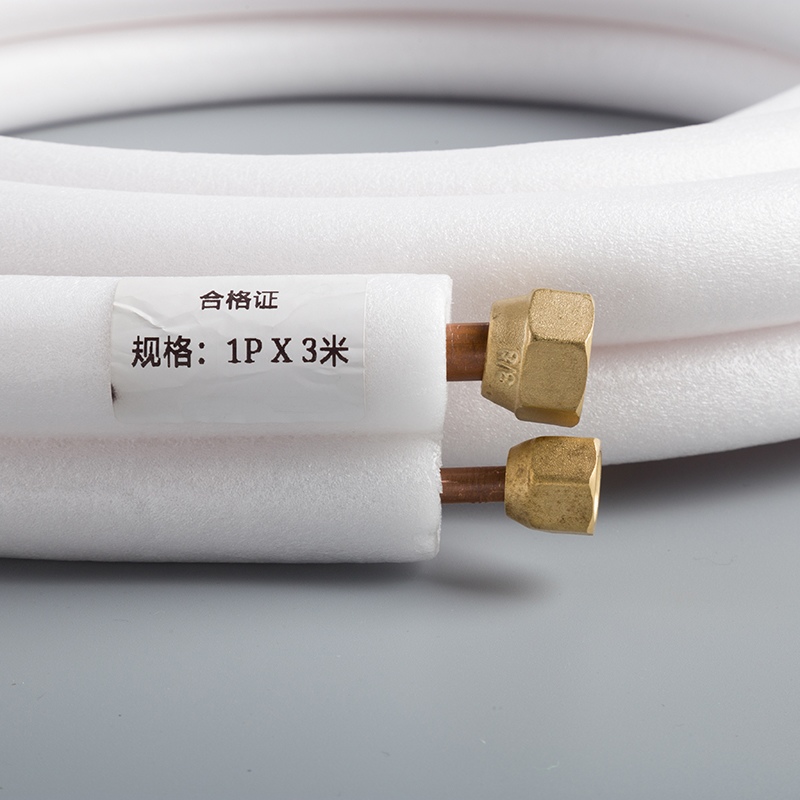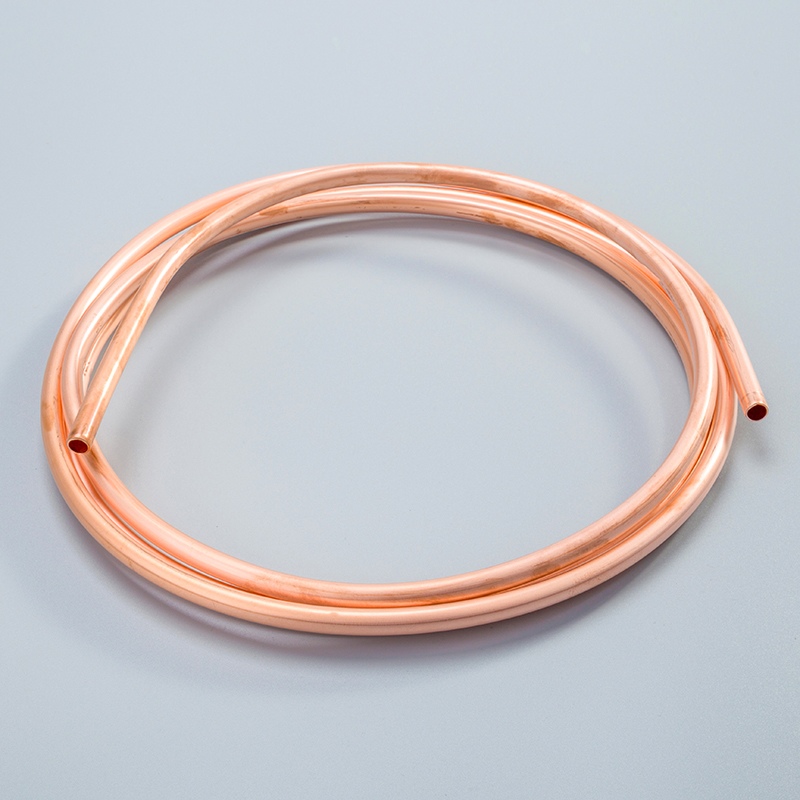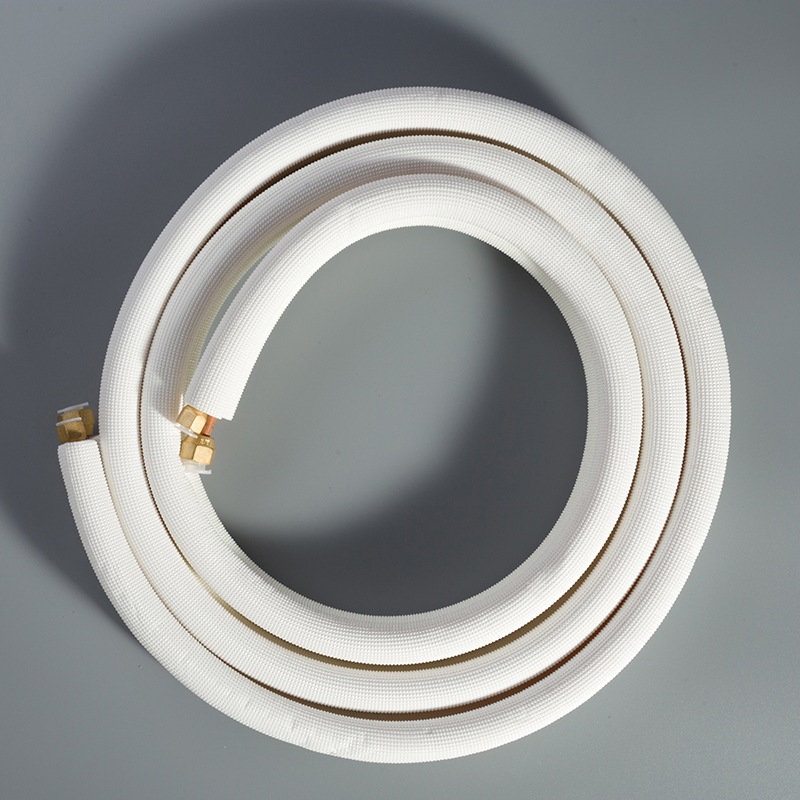Pros and Cons of Air Conditioner Copper Pipe Insulation

Write a 'Pros and Cons' blog post on 'Different air conditioner copper pipe insulation products'
Insulation is a critical element in optimizing the efficiency of air conditioning systems, especially when it comes to air conditioner copper pipe insulation. Proper insulation not only enhances energy savings but also ensures a comfortable indoor environment year-round. Studies have indicated that investing in quality insulation can lead to significant energy savings, up to 20% or more. By understanding the importance of insulating copper pipes and exploring various insulation materials, homeowners can make informed decisions to improve HVAC performance and longevity.
Types of Pipe Insulation

When considering Different air conditioner copper pipe insulation products, it's essential to evaluate the characteristics and industry standards of each material. Two common types are Rubber Insulation and Foam Insulation.
Rubber Insulation
Characteristics of Rubber Insulation
Neoprene Rubber Foam, a versatile material, is utilized for soundproofing, waterproofing, insulation, and padding.
It effectively protects against moisture, heat, cold, and sound.
Resistant to moisture, UV rays, and harsh weather conditions.
Industry Standards for Rubber Insulation
Rubber and Foam Pipe Insulation:
A flexible elastomeric closed-cell foam insulation that controls condensation efficiently on piping systems.
Resistant to moisture, mold, and UV rays.
Suitable for commercial and industrial applications due to its lower thermal conductivity.
Foam Insulation
Characteristics of Foam Insulation
Elastomeric Rubber Foam Insulation Sheets have high thermal insulation value.
Resistant to water, steam, UV rays, harsh weather conditions, and oils.
Easy to install and flexible; prevents the formation of fungus and mold.
Industry Standards for Foam Insulation
Ideal for various applications due to its versatility in protecting against different environmental factors.
Comparative Analysis

Thermal Conductivity
Rubber insulation exhibits remarkable thermal conductivity properties, making it a preferred choice for various applications. The Foam Insulation also demonstrates competitive thermal conductivity characteristics, ensuring efficient temperature regulation.
Rubber Insulation Thermal Conductivity
Offers superior heat transfer resistance.
Ensures optimal energy efficiency.
Maintains consistent thermal performance over time.
Foam Insulation Thermal Conductivity
Provides effective insulation against heat transfer.
Enhances overall cooling efficiency.
Demonstrates stable thermal conductivity properties.
Temperature Resistance
The Rubber Insulation material boasts impressive temperature resistance capabilities, ensuring durability and reliability in diverse environments. Similarly, Foam Insulation offers robust temperature resistance features to maintain consistent performance under varying conditions.
Rubber Insulation Temperature Resistance
Withstands high temperatures effectively.
Ensures long-term durability and stability.
Resists temperature fluctuations with ease.
Foam Insulation Temperature Resistance
Exhibits excellent resistance to extreme temperatures.
Guarantees reliable performance in challenging settings.
Maintains structural integrity under temperature variations.
Fire Safety
When considering fire safety aspects, Rubber Insulation stands out for its predictable behavior and enhanced safety measures. On the other hand, Foam Insulation provides cost-effective solutions but may require additional precautions due to its fire performance variability.
Rubber Insulation Fire Safety
Demonstrates predictable fire behavior.
Enhances overall safety standards.
Minimizes fire hazards effectively.
Foam Insulation Fire Safety
Requires careful monitoring for fire safety.
Cost-effective solution with variable fire performance.
Demands additional precautionary measures for optimal safety protocols.
Density
Rubber Insulation Density
Rubber Insulation boasts a higher density compared to other insulation materials, ensuring durability and longevity.
The density of Rubber Insulation contributes to its robustness and ability to withstand various environmental conditions effectively.
This high density in Rubber Insulation enhances its thermal resistance properties, providing optimal insulation for copper pipes.
Foam Insulation Density
Foam Insulation, on the other hand, is characterized by a lower density profile, offering flexibility and ease of installation.
The lower density of Foam Insulation does not compromise its insulating capabilities but provides a lightweight alternative for applications requiring maneuverability.
Despite its lower density, Foam Insulation maintains excellent thermal efficiency, making it a versatile choice for air conditioner copper pipe insulation.
Cost
Cost of Rubber Insulation
When considering the cost aspect, Rubber Insulation may have a slightly higher initial investment compared to other materials due to its superior characteristics.
The cost of Rubber Insulation is justified by its long-term benefits such as energy savings and enhanced HVAC performance.
Investing in Rubber Insulation proves cost-effective over time, offering value for money with its durable and efficient insulation properties.
Cost of Foam Insulation
In contrast, Foam Insulation presents a more budget-friendly option with lower upfront costs without compromising quality or performance.
The affordability of Foam Insulation makes it an attractive choice for homeowners seeking effective insulation solutions within a limited budget.
Despite being cost-efficient, Foam Insulation delivers reliable performance and contributes to energy efficiency in air conditioning systems.
Detailed Comparison within Rubber Insulation
Types of Rubber Insulation
Closed-cell Rubber Insulation
Closed-cell Rubber Insulation is known for its compact structure, providing enhanced durability and resistance to moisture infiltration.
This type of insulation ensures optimal thermal performance by minimizing heat transfer through the copper pipes.
Closed-cell Rubber Insulation offers superior protection against environmental elements, making it a reliable choice for long-term insulation needs.
Open-cell Rubber Insulation
Open-cell Rubber Insulation features a more porous composition, allowing for flexibility and ease of installation.
This type of insulation excels in sound absorption and vibration dampening, enhancing overall system efficiency.
Open-cell Rubber Insulation provides effective thermal insulation while offering cost-effective solutions for air conditioner copper pipe applications.
Performance Comparison
Thermal Performance
In terms of Thermal Performance, Closed-cell Rubber Insulation demonstrates exceptional heat resistance properties, ensuring efficient temperature regulation.
The compact structure of this insulation type minimizes heat loss or gain along the copper pipes, optimizing HVAC system efficiency.
Conversely, Open-cell Rubber Insulation offers adequate thermal insulation capabilities, balancing performance with affordability for homeowners.
Durability
When evaluating Durability, Closed-cell Rubber Insulation stands out for its robustness and longevity in various operating conditions.
The dense structure of this insulation type enhances its resilience against wear and tear over time, maintaining consistent performance levels.
On the other hand, Open-cell Rubber Insulation provides satisfactory durability while prioritizing flexibility and ease of handling during installation processes.
Rubber Insulation emerges as the preferred choice for commercial and industrial applications, offering lower thermal conductivity and higher temperature resistance. Conversely, Foam Insulation provides a cost-effective solution with satisfactory performance. For optimal durability and insulation efficiency, Closed-cell Rubber Insulation excels in protecting copper pipes against environmental elements. Based on specific needs, Rubber Insulation is recommended for long-term reliability, while Foam Insulation suits budget-conscious homeowners seeking efficient solutions. When selecting insulation for air conditioner copper pipes, consider the durability and thermal properties to enhance HVAC system performance effectively.
See Also
Benefits of Selecting Copper Tubing for Air Conditioning
Key Advantages of Copper Piping in Air Conditioning
Maximizing Air Conditioner Efficiency with Copper Tubing Tips
The Impact of Pure Copper Tubing on Air Conditioning
Essential Role of Pure Copper Tubing in Efficient Air Conditioning


